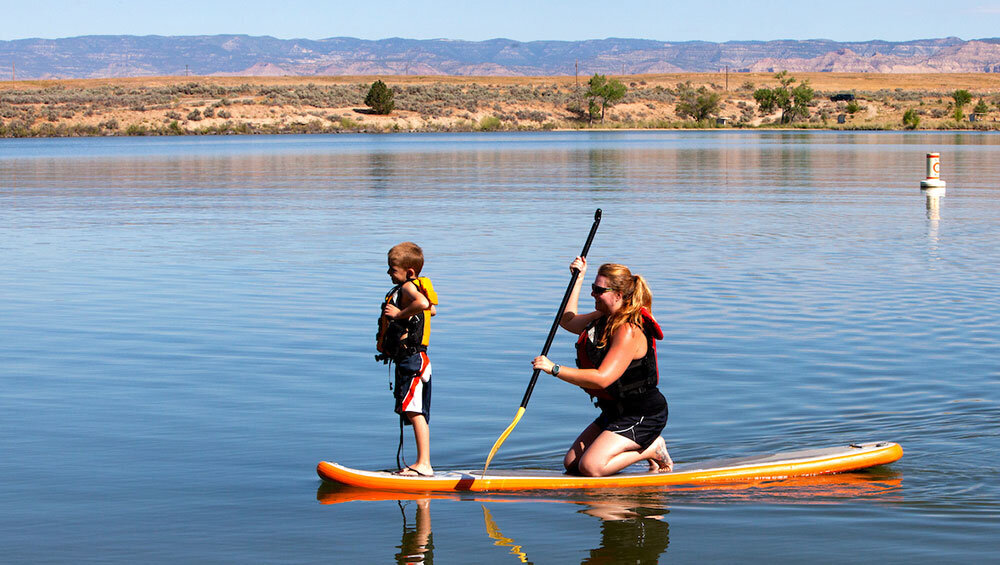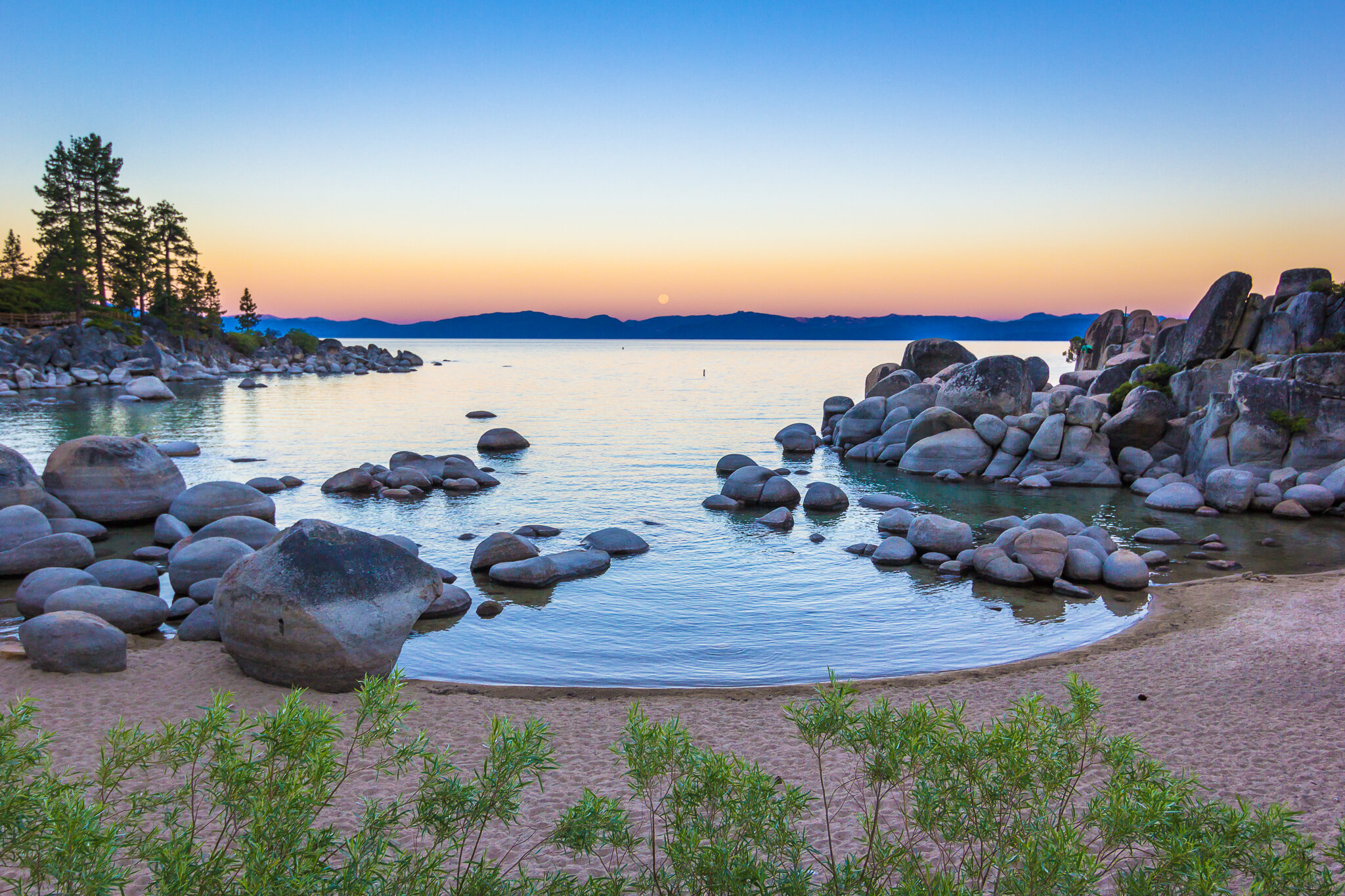America’s coastlines are prime real estate: they are beautiful and fun places to live, and therefore a great deal of beachfront property is privately owned. In addition to private ownership, barriers to entry for low income residents of an area, including policies requiring high fees for beach access/parking, have prevented many from experiencing the joy of going to the beach. Access to coasts to recreate and enjoy nature is not just for those who can afford it, it is for all. Thanks to 56 years of LWCF projects along our fresh and saltwater coasts, the public can access America’s lakefront and oceanfront beaches and enjoy time outdoors with their families. Below is a small sample of where LWCF investments have increased public access to our coasts. For even more examples, check out the LWCF project map.
Jones Beach State Park
With six miles of beachfront in easy reach of the New York City metropolitan area, Jones Beach is the most popular and heavily visited beach on the East Coast, with an estimated six million visitors per year. Over the history of LWCF, starting in 1966, 23 separate investments totaling over $8.7 million have gone to Jones Beach State Park through the State and Local Assistance Program to develop and rehabilitate facilities that meet the intense user demand put on the park each year. LWCF grants have helped renovate the swimming pool, bathrooms, bathhouses, boardwalk and water systems while other investments have supported a children’s nature center and fishing pier at this popular recreation area just a stone’s throw from the nation’s largest city.
Photo credit: Hans JG via Flickr
Highline Lake State Park
Colorado’s Highline State Park is an incredibly popular recreation area in the Grand Valley, and is a favorite for watersports, birding, fishing, camping, mountain biking, and extreme racing. Investments of $140,000 from LWCF in the early 1970s through the State and Local Assistance Program helped fund some of the earliest development projects in the park, with contributions to general development and reservoir maintenance building construction. These initial investments are still paying dividends, as visitors to the park reportedly spend $7.2 million in local communities each year. However, the popularity of the park is often overwhelming, as the park reaches full capacity during most weekends of the summer months. Highline State Park could benefit from additional funding from sources such as LWCF in the future, both to increase its ability to host visitors, and further improve facilities. Officials have also voiced the need for funding to construct a breakwater to protect valuable shoreline recreation sites from erosion caused by wind and boating wakes.
Photo credit: CO Parks and Wildlife
Kenosha-Simmons Island Park
Kenosha’s Simmons Island Park and its beach along Lake Michigan have been adapted to increase the ADA-compliant accessibility of this Wisconsin beach. The 28-acre park is next to a bike trail and offers playground amenities. The park received an investment of $250,000 from LWCF in 2012 through the State and Local Assistance Program for boardwalk development, including portable mobility mats that make it easier for people in wheelchairs to navigate the beach. The park’s iconic red lighthouse now serves as a studio and gallery.
Photo credit: cmh2315fl via Flickr
Sandy Point State Park
For families in the Washington, D.C-Baltimore metropolitan area who lack the time or resources to drive several hours over to Maryland’s Atlantic beaches, Sandy Point State Park offers a beach-front experience, with a mile of Chesapeake Bay shoreline available for swimming and other beach activities. Located on the western shore of Chesapeake Bay in Annapolis — less than an hour away for the 10 million residents of the DC/Baltimore region and possessing impressive views of the Bay Bridge and other sights — Sandy Point State Park is a popular year-round destination. Over $5 million in investments from LWCF through the State and Local Assistance Program have supported the development and renovation of public facilities at this well-used park. Most recently, an allocation of $200,000 from LWCF in Fiscal Year 2016 provided funding to rebuild the Chesapeake Bay-themed Captain John Smith Plaza playground, a special play-place for young park visitors.
Photo credit: dcJohn via Flickr
Lake Tahoe Basin, Sand Harbor
Renowned for its startling clarity, Lake Tahoe lies in a large basin straddling the Nevada and California border in the Sierra Nevada. Investments from LWCF totaling more than $200 million over the years in the basin have been key to protecting the beauty and quality of the lake and surrounding forests in order to help promote public enjoyment.
Sand Harbor, one of the most popular and spectacular parks in the Tahoe basin, has many beaches that host a variety of outdoor recreational activities to serve its 1 million annual visitors. The Main Beach is 2,500 feet long and is popular for swimming, sunbathing and a wide variety of beach activities. There is also a small launch corridor for non-motorized watercraft at the south end. Divers Cove, popular with SCUBA divers and recreational beach users alike, is a smaller, more protected area just below the Visitor Center. The Boat Beach is a long stretch of sand on either side of the Sand Harbor Boat Launch Facility. Investments totaling $2.75 million from the Land and Water Conservation Fund through the State and Local Assistance Program have been used to benefit public access to Lake Tahoe on the Nevada side — starting right off the bat in 1966 for the acquisition of the beach area itself, with six subsequent grants for development of beach public use areas, the last one coming in 2015.
Photo credit: Trevor Bexon
Wondering about even more swim spots protected by LWCF? Check out our blog post from 2019, which shares even more places LWCF has provided public access to water.






